Imagine taking a bite of one of these gluten-free sourdough discard biscuits. The slightly crisp outer layer gently gives way to a fluffy interior. The buttery goodness just melts in your mouth! If you haven’t used sourdough discard to make biscuits yet, you need to try this easy recipe!
This post may contain affiliate links. Please read our Disclosure Policy.
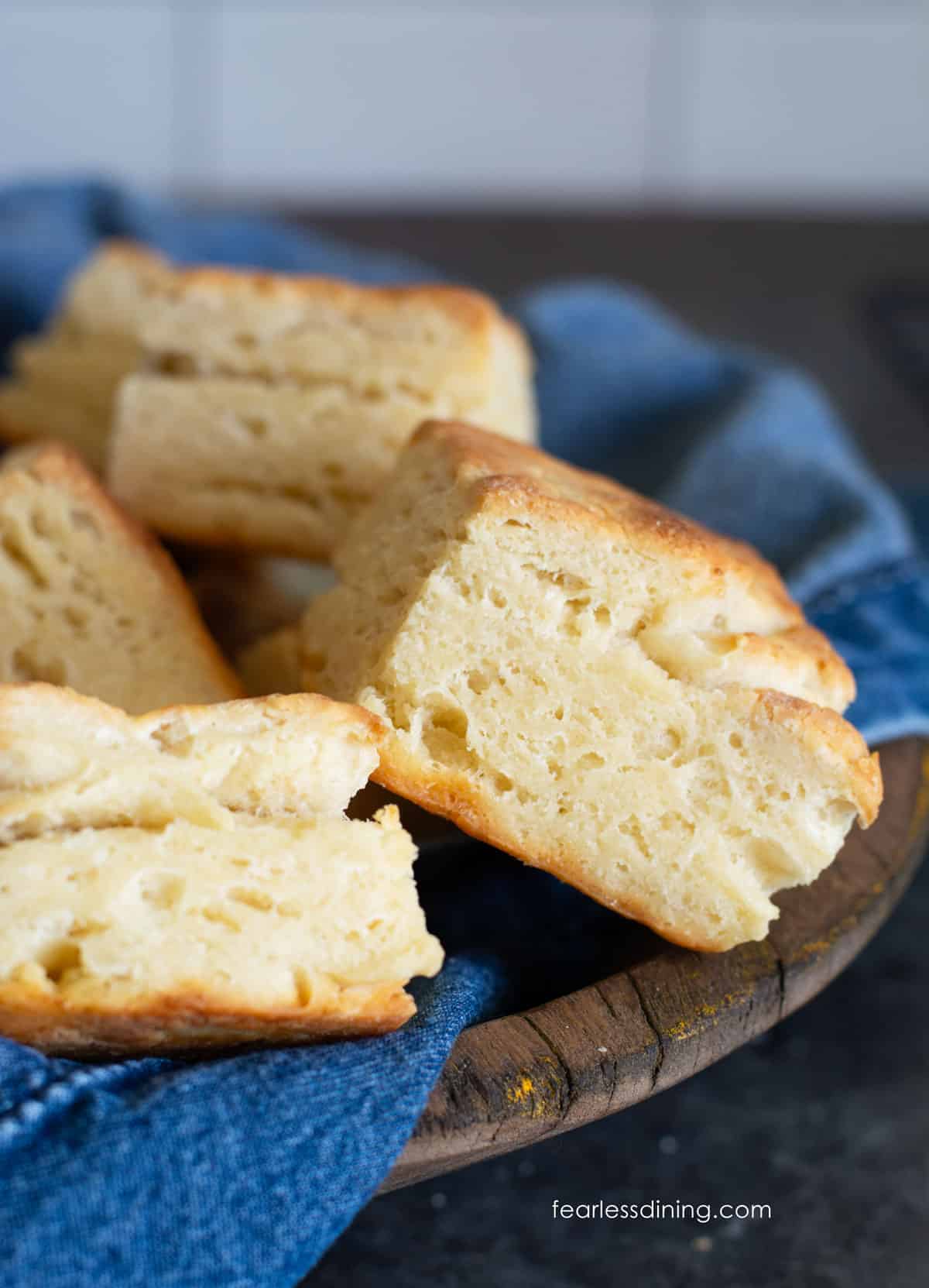
Absolutely fantastic recipe, thank you xxx!I made a batch yesterday to go with gravy for dinner as I had a craving for it and my son came home from university and he loves it also.”
damira, blog comment
If you love my famous Gluten-Free Biscuit recipe, wait until you try it using your gluten-free sourdough discard! OMG, the rise in these biscuits is incredible. There are so many flaky layers of buttery goodness!!
Biscuits are one of my favorite things to make, next to cinnamon rolls. I have many fun gluten-free biscuit recipes for you to try…including lots of fun flavors! If you have wanted to learn how to make a sourdough starter, I have an easy tutorial on to make a gluten-free sourdough starter.
If you have more discard to use up, try my Gluten-Free Sourdough Discard Muffins or Gluten-Free Discard Focaccia Bread. Looking for more gluten-free sourdough discard ideas? I’ve pulled together my best discard recipes and tips in this gluten-free sourdough discard roundup.
Allergen Information:
This sourdough discard biscuit recipe is gluten-free, nut-free, and soy-free. Check out my Recipe Index for more allergen-friendly foods.
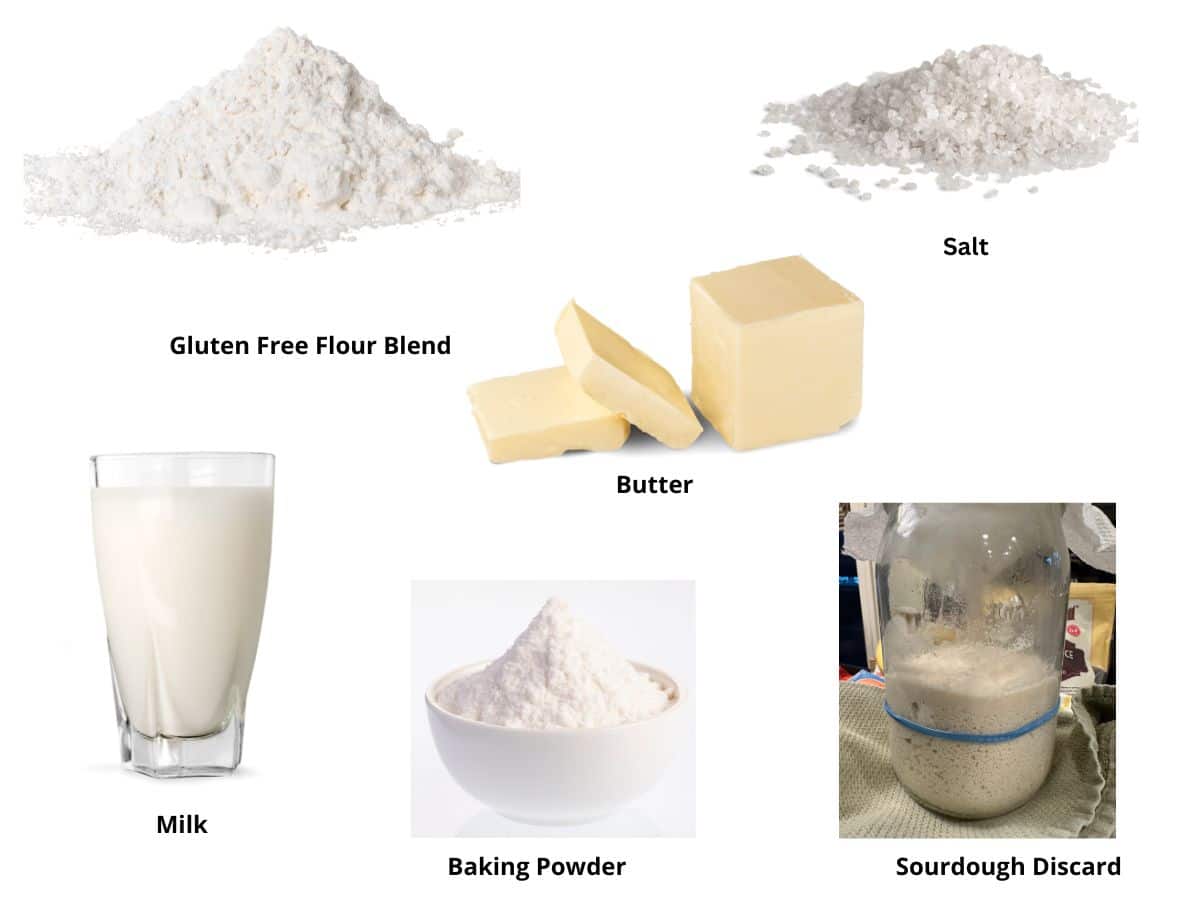
Ingredient Notes:
For the full list of ingredients and amounts, please go to the recipe card below.
- Gluten Free Flour Blend – This recipe is based on my classic Gluten Free Biscuit recipe. I tested it with the old Cup4Cup formulation and 11 blends in that recipe, and they should also work well in this recipe. Depending on the starch-to-grain ratio of the blend you use, you may need to tweak the moisture level.
- Baking Powder and Salt – Use aluminum-free baking powder.
- Sourdough Discard—My sourdough discard had been refrigerated for a day. If your discard has hooch (clear liquid) on top of the starter, drain it into the kitchen sink before using it. Don’t stir it into the discard.
- Butter – I used unsalted butter. If you use salted butter, don’t add extra salt.
- Milk or Non-Dairy Milk – I used oat milk when testing this recipe. I brushed the tops of the biscuits with a little buttermilk made from Anthony’s Buttermilk Powder to get them to brown on top.
Tips For Success
1. Use cold or frozen butter. It will make much better flaky layers!
2. Chill the dough for 30-45 minutes if you have the time. It will help the layers rise high.
3. If you use a biscuit cutter, do not twist it when you cut out the biscuits. Twisting seals the edges, making it more difficult for the biscuit to rise.
4. I have a lot of helpful gluten-free baking tips that can help you become a better baker on my gluten-free resources page.
Step-By-Step Photos and Directions:
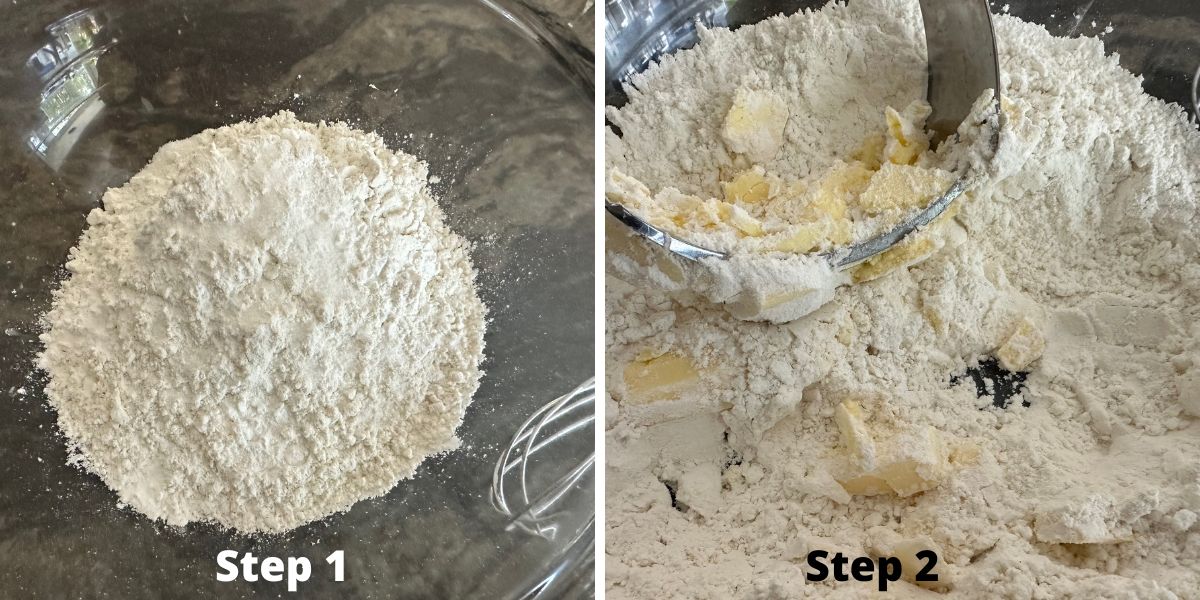
Step 1: Add the flour, baking powder, and salt to a large
Step 2: You can cut the butter into the dry ingredients one of two ways. You can use a pastry cutter as I show above, or you can freeze the butter and use a cheese grater to grate the butter into the dry ingredients.
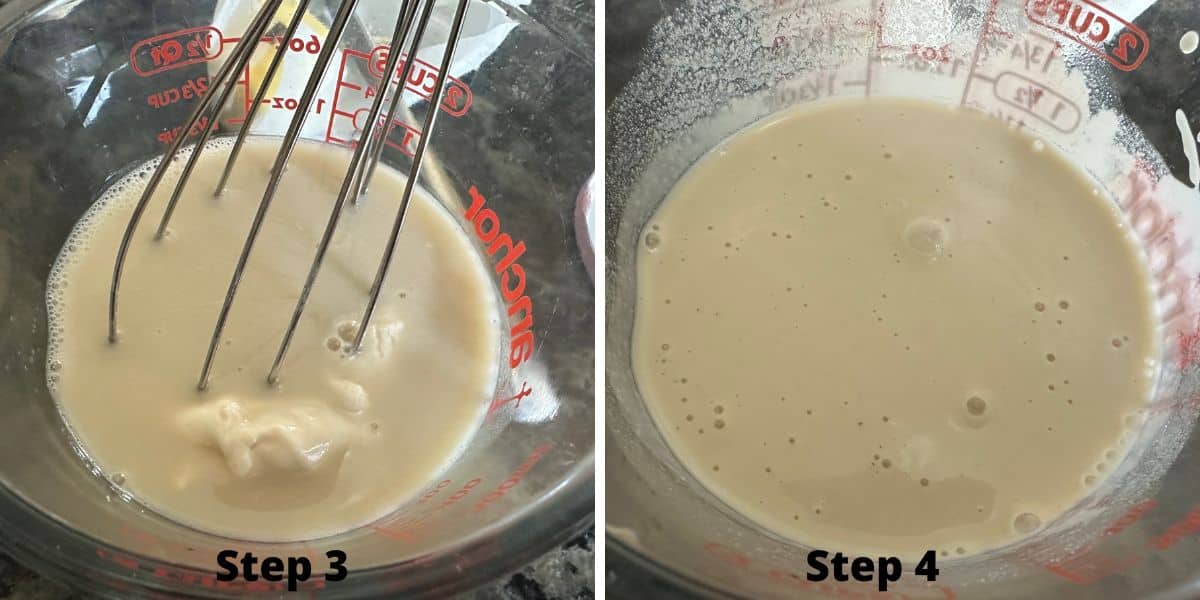
Email This Recipe To Me!
Step 3: Add the discard to your milk (not I am using oat milk in my test.) My discard became a little firm when stored in the refrigerator. It softened easily when I whisked it into the milk.
Step 4: My sourdough starter and discard are strong. It must be the gluten-free sourdough strain I got from Cultures For Health because I have never had a starter discard this active! If you have ever wanted to start a sourdough starter, this is the stuff to get. Check out all of those bubbles!
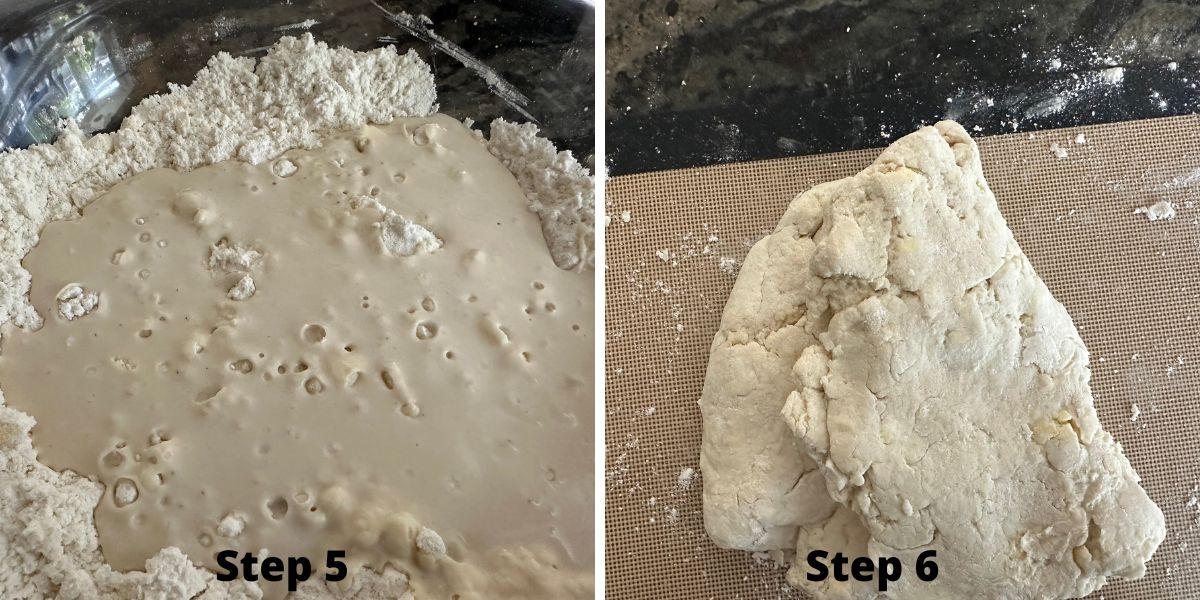
Step 5: Pour the wet ingredients into the dry ingredients. I didn’t expect this many bubbles from my discard! I am so excited to see how high these gluten-free sourdough biscuits rise!!
Step 6: Mix the ingredients into a nice workable dough. The dough shouldn’t be too sticky or dry. Again, note that this can vary widely depending on the gluten-free flour blend you use. Every blend is different. Read Why Gluten-Free Flour Blends Vary for more information on why this is.
📢 Sandi says: Every gluten-free flour blend has a different starch-to-grain ratio. The brand of gluten-free flour you use will affect the moisture of the batter. If your cake batter is too runny, add more flour, and if it is too thick, add more liquids.
Read Why Gluten-Free Flour Blends Vary to learn more about this.
Optional: Wrap the dough in plastic wrap and refrigerate the dough for 30-45 minutes.
Remove the dough and preheat the oven to 425º F. I also check to ensure the oven rack is positioned in the middle of the oven.
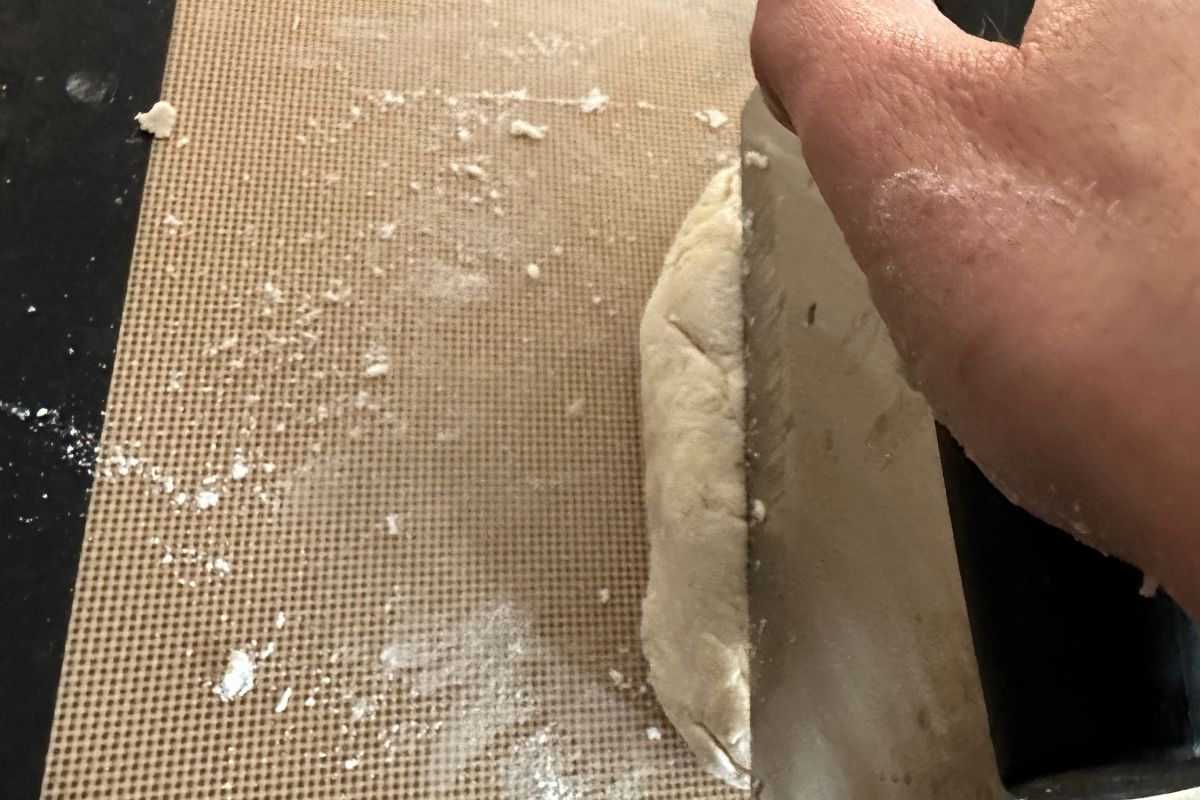
Step 7: You can shape these biscuits one of two ways, in a circle with a biscuit cutter or cut them as squares (easiest!) For this recipe, I am going for easy! Dust a silicone mat with a little flour and place the dough on the mat. You can read more about how to cut biscuits with a biscuit cutter in this Gluten-Free Cheddar Biscuits recipe.
Flatten your dough with your hands or a rolling pin. Fold it over itself and flatten it again three times. This helps give structure for layers to rise during baking. Try to do this quickly so the butter doesn’t melt. Take a dough scraper and use it to cut the dough into biscuit squares. You can make them any size you like.
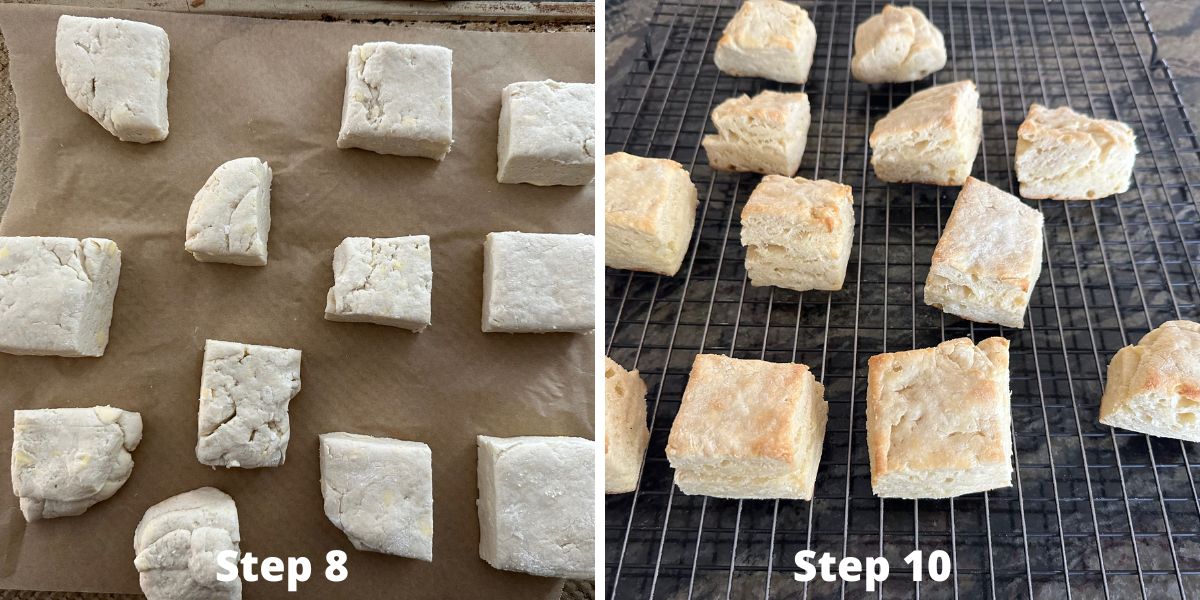
Step 8: Place the dough squares onto a parchment paper-lined baking sheet. If you do not have parchment paper, you can use a gluten-free baking spray to grease your pan.
Step 9: Brush the tops of each biscuit with milk. (Note: if you use plant-based milk, it will not brown much. I used buttermilk on top of the biscuits.) This will help the tops brown to golden perfection!
Step 10: Bake the biscuits for 22-25 minutes. The actual baking time can vary depending on the size and thickness of your biscuit dough. You will know the biscuits are done baking when they are risen up and the tops are golden brown.
Step 11: Remove the biscuits from the oven to a wire cooling rack. Enjoy! If you love these biscuits, try my Gluten-Free Maple Oat Biscuit recipe next!
Frequently Asked Questions:
That is a great question. It is hard to tell. My biscuits tend to rise pretty high because I include 2 TBSP of aluminum-free baking powder. I think the sourdough is more known for giving a little sour flavor to the biscuits than rising them.
Sourdough discard can sit in the fridge for up to 10 days. If your sourdough is on the younger side, it may not stay fresh as long as it is a more established starter.
Store your sourdough biscuits in an airtight container. I always recommend freezing them if you don’t plan to eat them all in a couple of days. Gluten-free baked goods tend to spoil quicker. Freeze them in a freezer-safe zipper bag. They thaw perfectly in 35 seconds in the microwave oven.
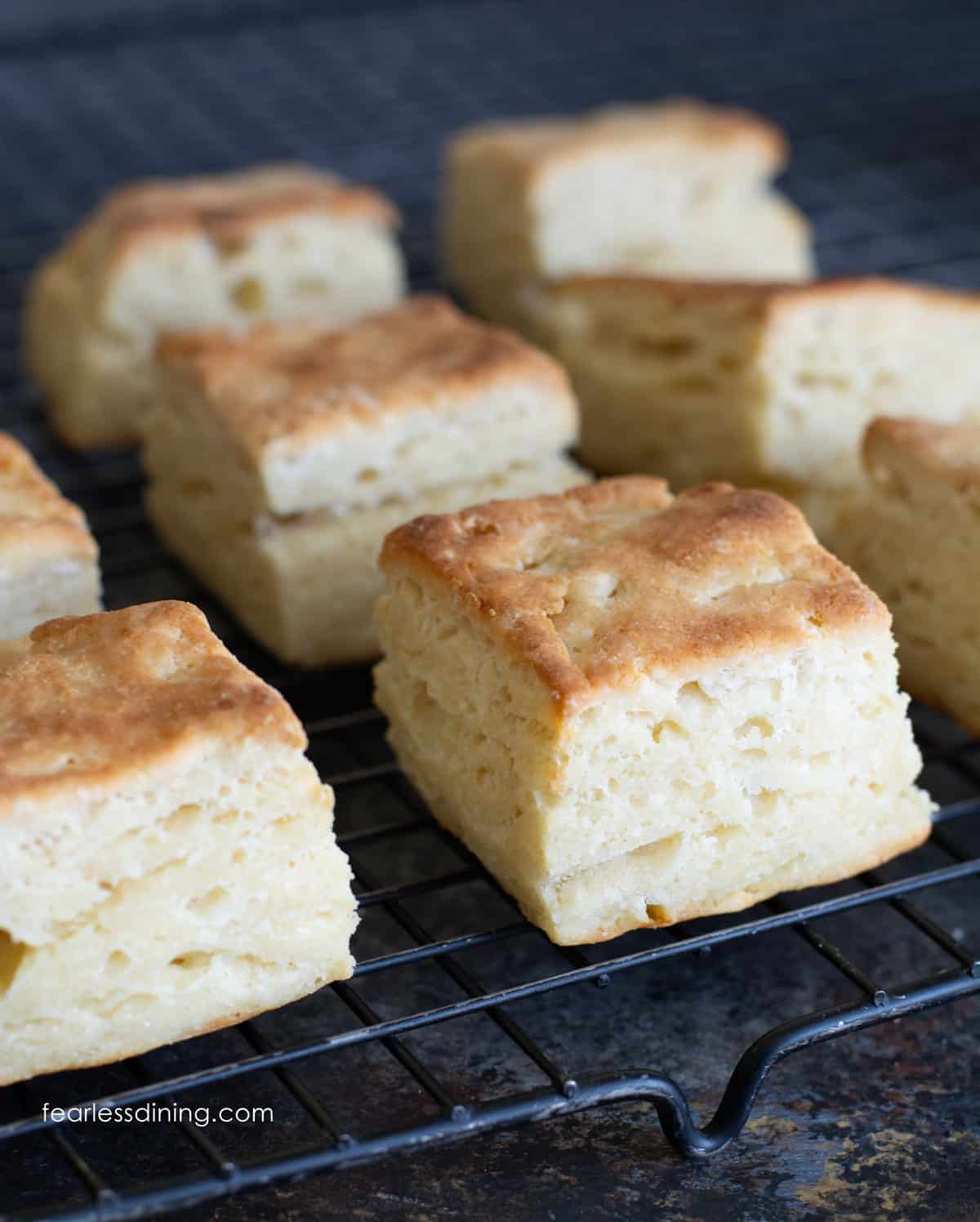
More Gluten Free Biscuit Recipes:
- Gluten-Free Brown Sugar Cinnamon Biscuits
- Easy Gluten-Free Cornmeal Biscuits
- Gluten-Free Pumpkin Biscuits
- Homemade Gluten-Free Chocolate Buttermilk Biscuits
- Grain-Free, Paleo Biscuits
Love This Recipe?
If you made and enjoyed this recipe, I would be incredibly grateful if you could leave a comment below. Please include which flour blend you used. This helps others know this recipe is delicious. Thank you!

Flaky Gluten-Free Sourdough Biscuits
Ingredients
Method
- Add 2 cups gluten-free flour blend, 2 tablespoons baking powder, and 1 teaspoon sea salt to a large mixing bowl. Use a whisk to blend the dry ingredients.
- You can cut the 7 tablespoons unsalted butter into the dry ingredients one of two ways. You can use a pastry cutter as I show above, or you can freeze the butter and use a cheese grater to grate the butter into the dry ingredients.
- Add 1 cup gluten-free sourdough discard to your 1/2 cup milk or non-dairy milk am using oat milk in my test.) My discard became a little firm when stored in the refrigerator. It softened easily when I whisked it into the milk.
- Pour the wet ingredients into the dry ingredients. Mix the ingredients into a nice, workable dough. The dough shouldn't be too sticky or dry.
- Optional: Wrap the dough in plastic wrap and refrigerate the dough for 30-45 minutes.
- Remove the dough and preheat the oven to 425º F. I also check to ensure the oven rack is positioned in the middle of the oven.
- You can shape these biscuits one of two ways, in a circle with a biscuit cutter or cut them as squares (easiest!) For this recipe, I am going for easy! Dust a silicone mat with a little flour and place the dough on the mat.
- Flatten your dough with your hands or a rolling pin, fold it over itself, and flatten it again three times. This helps give structure for layers to rise during baking. Try to do this quickly so the butter doesn't melt. Take a dough scraper and use it to cut the dough into biscuit squares. You can make them any size you like.
- Place the dough squares onto a parchment paper-lined baking sheet. If you do not have parchment paper, you can use a gluten-free baking spray to grease your pan.
- Brush the tops of each biscuit with milk. This helps the tops get nice and browned.
- Bake the biscuits for 22-25 minutes. The actual baking time can vary depending on the size and thickness of your biscuit dough. You will know the biscuits are done baking when they are risen up and the tops are golden brown.
- Removed the baked biscuits to a cooling rack.
Nutrition
Notes
- I tested this recipe with Cup4Cup (the old formulation with dairy), but any of the 10 flour blends I tested in my Gluten-Free Biscuits Recipe should work well.
- If you use another blend, it is very normal that you may need more liquid. Every flour blend has a different starch-to-grain ratio. You can learn more about this in Why Gluten-Free Flour Blends Vary So Much.
- I used oat milk, but regular milk or any plant-based milk will work. If you are dairy-free, use a plant-based butter as well.
- Use salted or unsalted cold butter. If you use salted, omit the additional salt.
- Store your sourdough biscuits in an airtight container. I always recommend freezing them if you don’t plan to eat them all in a couple of days. Gluten-free baked goods tend to spoil quicker. Freeze them in a freezer-safe zipper bag. They thaw perfectly in 35 seconds in the microwave oven.
Nutritional Disclaimer
Nutritional information is an estimate provided to you as a courtesy. You should calculate the actual nutritional information with the products and brands you are using with your preferred nutritional calculator.
Tried this recipe?
Let us know how it was!
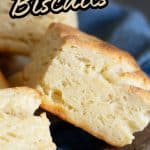
I have made this several times now and I love them! I use a full cube of butter (8TBLS instead of 7 TBLS) just so I don’t have 1 TBLS of butter left over in my fridge. I used the Walmart great value blend of gluten free flour and did have to add more milk. The first time I made them I didn’t brush with milk and the second time I did. It was great!! I recommend it whole heartedly!
Thank you for this great recipe to use up some of my sourdough discard!!
I am so glad you loved this recipe. It is one of our new favorites!!
I would like to use a blend of my own gluten free flours – not pre mixed. Have you tried anything like that? Sorghum, millet, rice, tapioca, potato starch would be nice to try
Hi Leah, I have used my personal blend in my other biscuit recipe, which this sourdough recipe is based on. Here is a link to my flour blend, it sounds like a similar combination of ingredients. https://www.fearlessdining.com/easy-gluten-free-all-purpose-flour-blend/
How thick are you supposed to roll out the dough?
Hi Stephanie, I roll mine about 2 inches thick.
I used King Arthur flour that you’ve used in other recipes as that is what I had on hand…. They didn’t really rise and tasted “floury”. I’ll try your other flour mix next time.
Hi Leilah, I am sorry this tasted floury. I want to verify that you used aluminum-free baking powder and that you verified it wasn’t expired. That is critical in this recipe. Also, you don’t mention if you cut these as squares or used a biscuit cutter. If you used a biscuit cutter, it is important not to twist the cuter o ryou seal the edges of the biscuits…which affects the rise.
Can I use ghee instead of butter (my friend is sensitive)?
Hi Rebecca, I haven’t tested ghee. You can use Smart Balance dairy-free butter.
Absolutely fantastic recipe, thank you xxx
I made a batch yesterday to go with gravy for dinner as I had a craving for it and my son came home from university and he loves it also..
They worked perfectly first time and the recipe is easy to follow and not hard for a limited mobility person like myself which is a huge plus xxx
I am so glad you loved this recipe…The sourdough discard adds a lot of flavor.